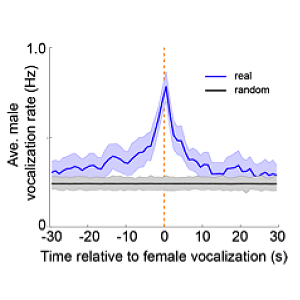Main Menu (Mobile)- Block
- Overview
-
Support Teams
- Overview
- Anatomy and Histology
- Cryo-Electron Microscopy
- Electron Microscopy
- Flow Cytometry
- Gene Targeting and Transgenics
- High Performance Computing
- Immortalized Cell Line Culture
- Integrative Imaging
- Invertebrate Shared Resource
- Janelia Experimental Technology
- Mass Spectrometry
- Media Prep
- Molecular Genomics
- Primary & iPS Cell Culture
- Project Pipeline Support
- Project Technical Resources
- Quantitative Genomics
- Scientific Computing
- Viral Tools
- Vivarium
- Open Science
- You + Janelia
- About Us
Main Menu - Block
- Overview
- Anatomy and Histology
- Cryo-Electron Microscopy
- Electron Microscopy
- Flow Cytometry
- Gene Targeting and Transgenics
- High Performance Computing
- Immortalized Cell Line Culture
- Integrative Imaging
- Invertebrate Shared Resource
- Janelia Experimental Technology
- Mass Spectrometry
- Media Prep
- Molecular Genomics
- Primary & iPS Cell Culture
- Project Pipeline Support
- Project Technical Resources
- Quantitative Genomics
- Scientific Computing
- Viral Tools
- Vivarium
Mouse Vocalization System
A novel microphone array based system to localize and assign mouse vocalization
Most small rodents, including mice, emit ultrasonic vocalizations that are integral to courtship. However, unlike other vocalizing animals, ultrasonic vocalizations of mice lack a visible movement; therefore, it is difficult to identify which mouse is vocalizing during social interaction. It is difficult to determine the level of vocal participation by males and females during courtship.
Researchers at Howard Hughes Medical Institute’s Janelia Research Campus developed a four-channel ultrasonic-microphone-array-based system that enables the localization and assignment of vocalization to socially interacting individual mice to identify vocalizing mice. The system uses custom software to control and synchronize the acquisition of audio and video data. With this system, vocal signals can be automatically extracted and partitioned into small pieces. The location of every piece is estimated from arrival time differences between each pair of microphones. Estimated locations for the pieces are averages to produce a predicted sound source location. Finally, vocal signals are assigned to each mouse based on this estimate and the position of the mice.
Use of the system has been demonstrated in groups of mice allowing researchers to precisely distinguish sex-specific contributions during courtship. Contrary to the longstanding belief that only male mice produce courtship vocalizations, the system has provided the first compelling evidence that female mice vocally interact with males during courtship.
Advantages:
- The sensitive approach automatically extracts and locates the signal source
- Includes custom software to control and synchronize the audio data and video acquisition
- Can precisely distinguish sex-specific contributions during courtship in mice
- Assembled from standard audio and video capture components
Applications:
- The system allows the localization and assignment of vocalization
- The system enables the study of social behavior in mice as a model system for language disorders and potential markers of social deficits
Opportunity:
Free to make for Non-Profit Research by downloading designs at Flintbox link at the right.
Rights and designs available for Commercial License.
In the public domain. See Neunuebel et al., eLife 2015;4:e06203.
For inquiries, please reference:
Janelia 2014-019

